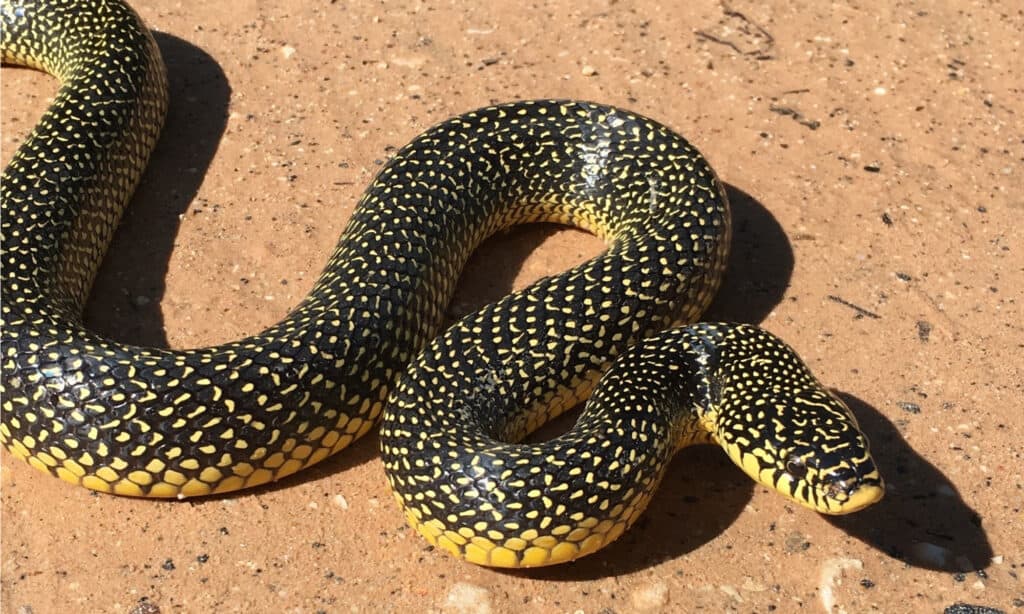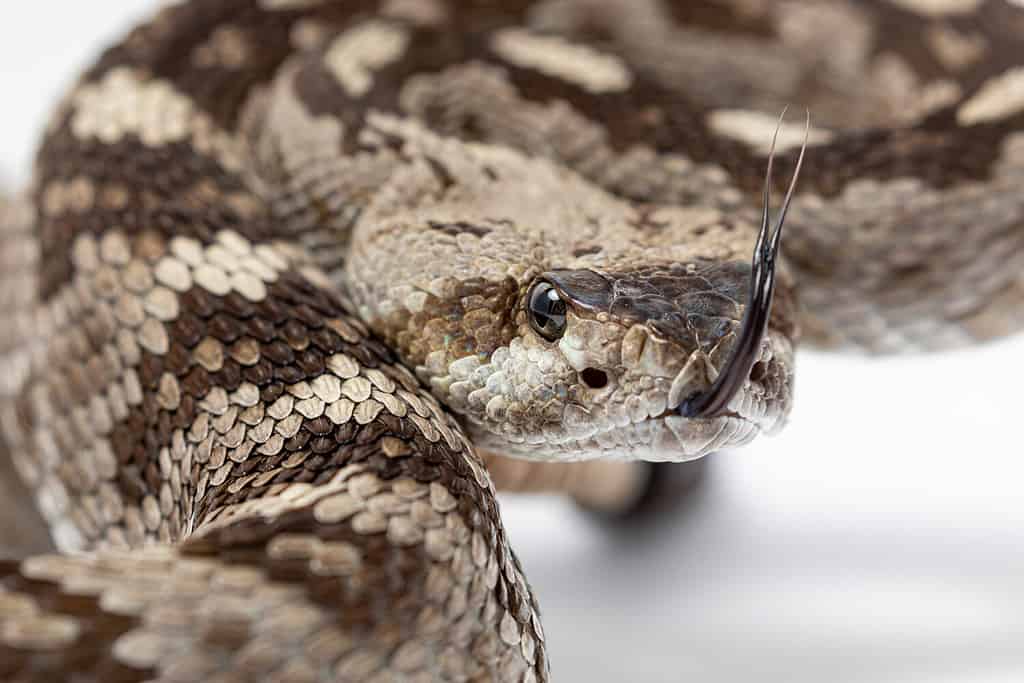Like all reptiles, snakes possess coverings called scales. These features play a key role in several important functions. Discover the different snake scale types and the function of each.

The speckled kingsnake has a glossy black body with whitish-yellow dots on its scales.
©Joe Farah/Shutterstock.com
What Are Scales?
Scales make up a snake’s skin. These individual coverings are made up of a substance known as keratin, which is the same hard, brittle material found in human fingernails.

A closeup of the ornate black-tailed
rattlesnake
shows the large triangular intranasal scales at the tip of their snout.
©Scott Delony/Shutterstock.com
How Do Scales Form?
A snake’s scales form in the top layer of its skin known scientifically as the epidermis. Scales typically make up a small portion of the epidermis called a fold. The snake’s lower skin layer called the dermis initially helps support the developing scale. However, as time moves on, keratin hardens the skin folds. Eventually, these folds turn into scales. A fully mature snake often has hundreds of scales throughout its body.
Different Types of Snake Scales
Scientists divide scales into two general categories: smooth and keeled.
As their name might suggest, smooth scales are even and level. Additionally, these features shine and reflect light. Keeled scales possess a noticeable roughness and rigidity.
Scales are further divided into several specific subtypes such as:
Ventral Scales
Also known as belly scales, these big and long features align with a snake’s bottom. Without ventral scales, snakes could not properly move. Scientists suggest that the bodily components act like a car tire’s treads enabling the snake to slither across all types of surfaces.
Dorsal Scales
These skin designs appear on a snake’s rear side and are also commonly labeled back scales. Dorsal scales vary in color, shape, and size. This all depends on the type of snake. The dorsal variety also enables snakes to travel along various terrains. However, the coloring of such scales might also provide important disguises aiding the creatures in hunting and hiding from predators.
Rostral Scales
Certain snakes possess a rostral or nose scale. This feature helps the reptile move through potentially challenging locations like soil or sand.
Rattle Scale
Unique to rattlesnakes, the rattle scale is located on the tail. When the snake shakes this feature, it produces a terrifying rattle-like sound warning predators or enemies of impending trouble.
Discover the "Monster" Snake 5X Bigger than an Anaconda
Every day A-Z Animals sends out some of the most incredible facts in the world from our free newsletter. Want to discover the 10 most beautiful snakes in the world, a "snake island" where you're never more than 3 feet from danger, or a "monster" snake 5X larger than an anaconda? Then sign up right now and you'll start receiving our daily newsletter absolutely free.
Thank you for reading! Have some feedback for us? Contact the AZ Animals editorial team.








